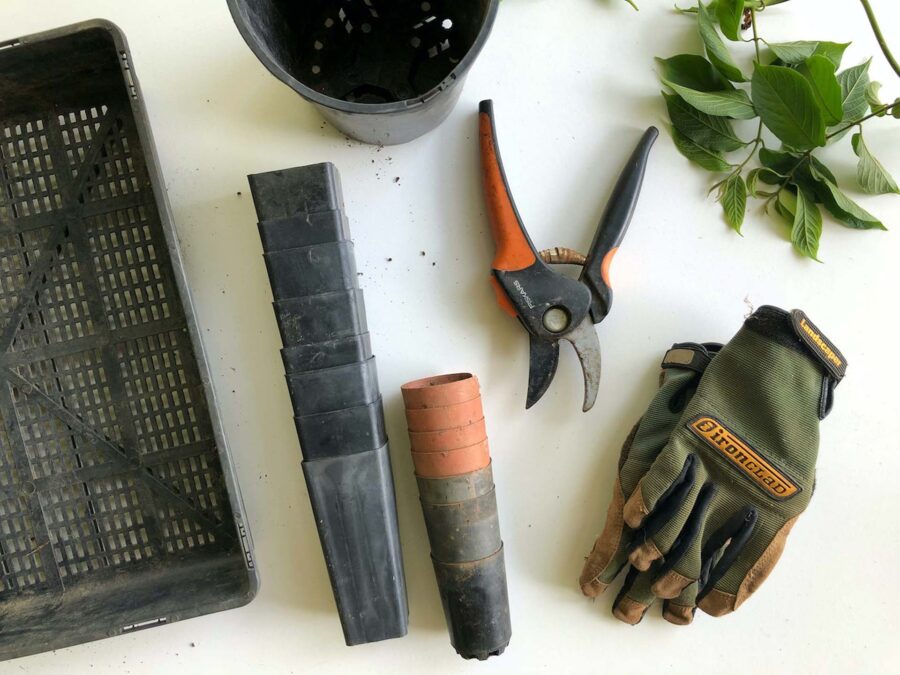

How to Move a Gazebo Across the US Without a Fuss
Posted in How-to on December 25, 2023
Embarking on the adventure of how to move a gazebo across the US? We’re excited to share essential tips on efficiently disassembling, packing, and transporting a gazebo. Our focus isn’t just on the ‘how-tos’ but also on making the process enjoyable. Learn the best ways to dismantle your gazebo without damage, clever packing hacks to keep all components secure, and strategies for smooth reassembly in a new backyard.
How to Move a Gazebo – Most Important Instructions
When planning to move a gazebo, the most important instructions revolve around how to move efficiently and safely. It’s crucial to plan a move carefully to ensure every aspect is considered.
Begin with a comprehensive gazebo dismantling guide, which will provide step-by-step instructions on how to carefully take apart your gazebo.
Next, use expert gazebo handling solutions. These solutions often include specialized packing techniques and materials. Whether you’re relocating across town or across the country, these strategies ensure the gazebo arrives in perfect condition, ready for reassembly and enjoyment in its new location.
Assess the Gazebo Before the Move
Before initiating the relocation of an outdoor shelter, a thorough assessment is paramount to prevent relocation mistakes and ensure a stress-free relocation. The first step is to evaluate the size of the structure, as this determines the logistics required for transport. Next, consider the material – whether wood, metal, or vinyl – as each requires different handling and protection measures.
Assessing the condition is equally important. Any existing wear or damage could affect the integrity during transit. This initial evaluation is crucial in developing a strategy that addresses specific needs, ensuring the shelter’s safe and efficient transfer to its new location.
Decide Whether to Move It Whole or in Parts
Deciding whether to transport an outdoor shelter whole or in parts hinges on several considerations. Firstly, evaluate the structure’s size and design. Larger or more intricate designs might necessitate disassembly to prevent damage. The fear of relocating such a significant piece intact can be mitigated by consulting with a long-distance moving company.
Their assessment services can provide invaluable insights into the safest and most efficient method of transport. When organizing a relocation, consider access to the current and new location, as well as the potential risks involved in moving the structure as a single unit. This decision is critical in planning a successful relocation.

Necessary Preparations for Moving a Gazebo
Without preparation, moving heavy outdoor structures can be a disaster. Preparing an outdoor pavilion for relocation involves several detailed steps to ensure its integrity and readiness for transport. First on the to-do list is to secure any loose elements of the structure, such as removable panels or decorative features, to prevent them from dislodging or being damaged.
Next, it’s essential to check for any local regulations and obtain necessary permits, especially for cross-country relocations involving heavy outdoor structures. The area surrounding the gazebo should be cleared of any obstacles or debris, creating an unobstructed route for the cross-country movers.
On top of that, consider protecting the structure’s surface against scratches or weather elements during transit, especially if it’s made of sensitive materials like wood or glass. This preparatory phase is crucial for a hassle-free relocation process.
Importance of Clearing the Path and Ensuring Safe Access
Ensuring safe transport heavily relies on the preliminary step of clearing the path and ensuring safe access. This involves removing any potential obstacles, such as garden furniture, planters, or low-hanging branches, that could hinder access to the structure.
For a seamless relocation, the route from the pavilion’s current location to the relocation vehicle should be as direct and obstacle-free as possible. This not only makes relocation easier but also minimizes the risk of damage to the structure or the surrounding property.
Additionally, checking the stability of the ground along the path is vital to prevent any accidents. Addressing these details ahead of time can significantly reduce the complexity of last-minute moving tasks, contributing to a smoother overall relocation process.

If You Want to Dismantle the Gazebo, Here’s How to Do It
Safely dismantling gazebos for relocation is a methodical process that requires careful planning to ensure both efficiency and safety. The first step is to remove any detachable accessories, such as curtains or nets.
Then, systematically disassemble the roof panels, followed by the supporting beams, ensuring each piece is carefully handled to avoid injury. It’s crucial to use appropriate tools and have a team ready to assist, especially when dealing with larger elements.
As you disassemble, organize and label each part. This not only aids in keeping track of all components but also simplifies reassembly after moving large items. Storing screws and other small hardware in labeled bags is a good practice.
Invite Friends and Family Members to Help Out
Inviting friends and family members to assist with relocating an outdoor structure offers not only practical help but also emotional support, especially when moving cross country and away from friends. Their involvement can make the process more enjoyable, for sure.
Friends can contribute by applying genius packing techniques for gazebos, ensuring that every component is securely and neatly packed. This teamwork can transform a daunting task into a collaborative and fun experience. This gathering can double as a goodbye party, allowing for a memorable farewell while accomplishing a significant task.

Packing and Protecting Gazebo Components
When it comes to gazebo relocation tips, packing and protecting the various components is a critical step. The best practices involve using the right materials to wrap and secure each part. For delicate components like glass panels or ornate trim, bubble wrap offers excellent protection against shocks and scratches.
Sturdy frames and beams, on the other hand, may be better suited to thicker, padded blankets to prevent any dents or damage. For metallic parts, rust-preventive coverings are advisable to maintain their condition, especially during long transports.
The choice of packing materials should be tailored to the specific type of outdoor gazebo, taking into account its material, size, and fragility. Ensuring that each component is individually wrapped and securely packed not only protects them but also makes reassembling much more straightforward.
Consider These Packing Hacks For Easily Handling Components
Understanding how to pack for relocation involves a few clever hacks that can significantly simplify handling its components. One useful approach is to use color-coded labels for different parts, facilitating quick identification and organization during reassembly.
Utilizing custom-sized boxes for smaller components can prevent them from moving around during transit. For larger, awkwardly shaped parts, creating makeshift padding with towels or linens can provide additional protection.
Vacuum-sealing screws, nuts, and bolts in clearly marked bags ensures that these small but crucial pieces are not lost. These hacks, combined with the selection of appropriate packing materials, streamline the process, making it easier to manage the components both during transit and when setting up the structure.

Hiring a Cross-Country Moving Company to Help You Transport the Gazebo
When planning to transport this garden haven across great distances, it’s prudent to choose a long-distance moving company specializing in such tasks. These companies are equipped with the necessary expertise and resources to handle the complexities of transporting large structures.
When selecting a company, consider factors like their experience with similar projects, customer reviews, and pricing to ensure it fits within the relocation budget. A reputable cross-country moving company can provide peace of mind, knowing that the outdoor gazebo is in capable hands.
The Benefits of Hiring a Professional Moving Company
Do you know all the benefits of hiring professional cross-country movers? Gazebos are a piece of cake for experts who have transported numerous items across the country, including pianos, grandfather clocks, bookshelves, and hot tubs. Some of the benefits that might not be evident:
- Expertise in handling – Professionals possess the skills to handle large structures, ensuring safe transport.
- Efficient packing and unpacking – They provide specialized packing services, reducing the risk of damage.
- Time-saving – Their experience enables quicker disassembly, packing, and reassembly.
- Stress reduction – With experts in charge, the burden of logistics and transport is significantly minimized.
- Insurance and liability – Professional companies offer insurance options to protect against any unforeseen damage.
How to Assess the Quality of the Services Long-Distance Movers Provide
Assessing the quality of long-distance moving services is required when planning any type of relocation. However, whatever your reasons to move may be, if you want to hire movers to move a gazebo, this becomes of paramount importance. Make sure that the movers you want to invest in are reputable. Begin by researching the company’s history and reputation, including reviews and testimonials.
Pay special attention to their expertise in handling similar structures. Apart from cross-country moving services, check whether they offer packing services. Verify their licensing on the Better Business Bureau website and insurance policies to ensure legitimacy and protection against potential damages. Another tip is to ask for detailed quotes and compare them with other providers, looking not only at the price but the range of services offered.
What Should Be the Protocol for Moving a Gazebo on Relocation Day
On relocation day, a well-defined protocol is essential for the smooth transfer of an outdoor shelter. It’s crucial to ensure that all preparatory steps have been completed, including disassembling and packing the structure as necessary. Coordination with the movers providing large structure moving services is key.
Verify that the path for removal is clear and accessible and that all components are organized and ready for loading. Double-check the list of things you forget to do when you relocate, such as taking a final inventory of all parts, securing loose items, and ensuring that valuable or fragile components are properly labeled and accessible.
On relocation day, effective communication with the relocation team, attention to detail, and a final walkthrough to confirm that nothing has been overlooked are all critical steps.
Avoiding Common Pitfalls During Reassembly
Secure gazebo reassembly requires meticulous attention to detail to avoid common pitfalls that can occur during this phase. One frequent mistake is not referring to the original assembly instructions or photos taken before disassembly, leading to confusion about which parts go where.
To prevent this, it’s advisable to keep a manual or visual guide handy during reassembly. Another error is rushing through the process, which can result in improperly fitted parts or even damage. Taking the time to align each piece correctly and ensuring all fastenings are secure is crucial.
Reassembling in an area that doesn’t mirror the gazebo’s final destination can create challenges in moving the structure to its intended spot. This can be avoided by reassembling the gazebo as close as possible to its final location.

Trust the Experts for the Gazebo Move
Trust the expertise of professionals. From initial assessments and preparations to the complex tasks of disassembly, transport, and reassembly, each step holds its unique challenges. The Cross-Country Movers company specializes in handling such intricate processes, ensuring that every aspect of the relocation is executed with precision and care. Our team is adept at navigating the common pitfalls of both dismantling and reassembling structures, providing peace of mind through their meticulous approach. Contact us right away!
FAQ
How Do I Prepare My Gazebo for Moving Across Country?
To prepare a gazebo for transport, start by securing all loose elements, such as curtains or removable decorations. Clean the structure to remove any debris or dirt that could cause damage during transit. It’s also crucial to assess and reinforce vulnerable parts, ensuring they are stable and secure. Additionally, gather all necessary packing materials and tools needed for disassembly if required.
What Should You Know About How to Move a Pergola?
When relocating a pergola, it’s important to consider its design and structure. Some pergolas are permanently anchored and may require significant dismantling. Assess the pergola’s material and overall condition to plan the safest method of transport. Also, consider the dimensions and weight, as these factors will determine the logistics of the relocation process.
Can All Types of Gazebos Be Moved?
Most gazebos can be relocated, but the ease of this process varies depending on their type, material, and size. Portable or pop-up gazebos are the easiest to transport, while permanent, wooden, or metal structures may require more complex disassembly and transport methods. Custom-built or intricately designed gazebos present additional challenges due to their unique components.
Do I Need to Disassemble My Gazebo for Moving?
Whether or not a gazebo needs to be disassembled depends on its size, type, and the distance of the transport. Smaller, modular gazebos may be moved in large pieces or as a whole, while larger, more permanent structures typically require disassembly to ensure safe and efficient transport.
What Should I Consider When Choosing a New Location for My Gazebo?
When choosing a new location for a gazebo, consider factors like ground stability, exposure to elements, accessibility, and how the gazebo’s placement will complement your outdoor space. Ensure the chosen spot has enough space for the gazebo’s dimensions and provides the desired level of privacy and shade.
What Are the Challenges of Moving a Heavy or Large Gazebo?
Transporting a heavy or large gazebo presents several challenges, such as the need for specialized equipment and logistics planning. The risk of damage during disassembly and reassembly increases with the gazebo’s size and weight. Additionally, securing permits and ensuring safe transit routes becomes more critical for larger structures.











